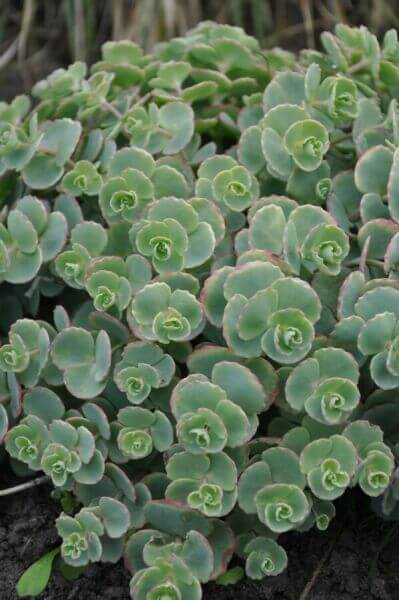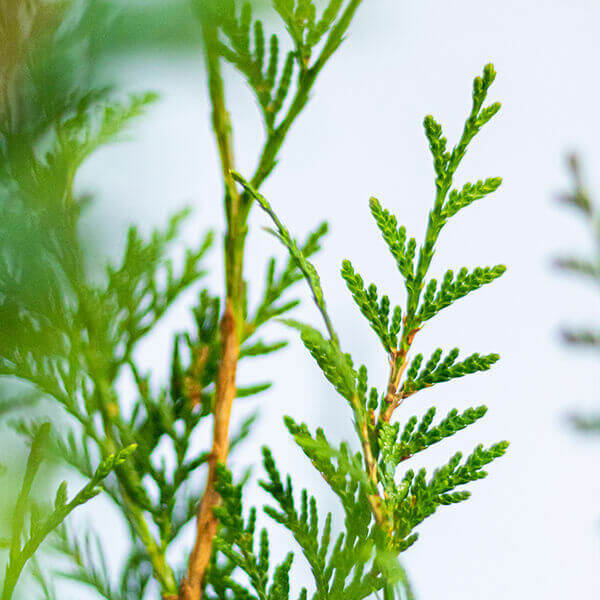Hedge Plants For Wildlife Corridors
Improve your garden's appeal with rich hedge varieties such as Yew (Taxus), Thuja, Laurel, Photinia, and Bamboo, celebrated for their structural integrity and ecological advantages.
Yew and Thuja supply evergreen protection and winter season durability, while Laurel provides rapid development and broad, aromatic leaves.
Photinia adds seasonal appeal with its dynamic red foliage, and Bamboo provides a low-maintenance, serene atmosphere.
These hedges enhance air quality, decrease sound, and develop tranquil, private spaces.
Correct planting, spacing, and maintenance ensure energetic development and ecological harmony.
Check out how these lavish varieties can elevate your garden's charm and wellness.
Secret Takeaways
Transform Your Garden With Lush Hedge Varieties
- Select Yew for its thick, evergreen development and unparalleled longevity.
- Select Laurel for its quick development and broad leaves, ensuring quick privacy.
- Select Photinia for its dynamic seasonal foliage, which turns a striking dark red.
- Utilize Bamboo for a low-maintenance, winter-hardy hedge with aesthetic appeal.
- Space plants 2-3 per meter and prune routinely for optimal growth and health.
Popular Hedge Plants
When transforming a garden with rich hedge varieties, it's vital to think about popular hedge plants such as Yew, Thuja, Laurel, and Photinia due to their special attributes and advantages.
Yew (Taxus) is extremely respected for its longevity and dense, green development, making it a prime option for sustaining landscapes.
Thuja is kept in mind for its evergreen foliage and robust winter season strength.
Photinia includes seasonal vibrancy with red leaves that darken with time, developing vibrant visual appeal.
Laurel provides fast growth and fragrant, broad leaves, ideal for quick personal privacy.
In Addition, Bamboo is an exceptional option for ambiance, providing a low-maintenance, winter-hardy option that enhances the garden's visual with its sophisticated, swaying walking sticks.
These selections cater to a range of horticultural requirements and preferences.
Benefits of Garden Hedges
Garden hedges use a plethora of advantages, making them a valuable addition to any landscape. These natural barriers are economical to execute and offer considerable wind security, improving air circulation and contributing to noise decrease. The thick foliage of hedges like Thuja and Beech guarantees privacy by blocking visibility, creating a serene and remote environment.
Hedges also play a crucial function in microclimate policy, offering a stable environment that cultivates plant growth and decreases temperature fluctuations. Their complex leaf structures filter pollutants, enhancing air quality and contributing to a much healthier garden ecosystem.
Moreover, hedges master noise decrease, absorbing and deflecting acoustic waves to lower ambient sound levels. This double performance of offering both visual and acoustic personal privacy enhances the general harmony and aesthetic appeal of any garden.
Planting and Upkeep Tips
For a successful hedge, careful preparation of the planting area is important. Make sure the soil has proper pH and drain to support strong root advancement.
Space the plants appropriately for the picked species. Water the hedge frequently throughout its preliminary growth stage, adjusting as needed with seasonal modifications.
Carry out a systematic insect control and illness avoidance strategy, using chemical or natural treatments when essential. Regularly examine for aphids, termites, and fungal infections.
Apply mulch to maintain wetness and suppress weeds. Seasonal pruning promotes dense growth and air flow, vital for plant health.
Following these standards will assist you cultivate a lively, well-maintained hedge that enhances the beauty of your garden.
Spacing and Trimming Guidelines
Spacing and Trimming Guidelines
Appropriate spacing and trimming are essential for cultivating healthy, visually appealing hedges. Appropriate spacing ensures each plant receives sufficient nutrients, light, and airflow.
Follow these guidelines for optimal hedge maintenance:
- Spacing: Position hedge plants 2-3 plants per meter to encourage robust growth.
- Pruning Techniques: Routine pruning is essential for preserving wanted hedge height and shape. Trim new growth in summer and cut back older wood during winter.
- Seasonal Care: Adjust cutting approaches and schedules according to seasonal requirements to guarantee plant health.
- Hedge Height: Routinely monitor and trim to maintain the desired hedge height and attain uniform aesthetics.
Complying with these steps will ensure your hedge prospers, enhancing both the appeal and functionality of your garden.
Choosing the Right Hedge
Selecting the Right Hedge
Choosing the suitable hedge involves assessing elements such as mature height, foliage density, and environmental resilience. Effective hedge plant selection needs comprehending each types' growth characteristics and site-specific adaptability.
For instance, Yew (Taxus) provides excellent longevity and dense development, while Thuja is noteworthy for its winter season durability. Additionally, thinking about maintenance requirements is vital; fast-growing types like Laurel or Privet need regular cutting, whereas low-maintenance alternatives like Bamboo or Ivy may be preferable for those seeking minimal upkeep.
Environmental aspects such as soil type, light availability, and moisture conditions ought to likewise direct the selection process. This cautious method guarantees the chosen hedges will flourish, offering both aesthetic and functional benefits to the garden landscape.
Shipment and Planting Advice
To ensure your hedge plants flourish, they ought to be delivered by specialized couriers and planted immediately upon arrival.
Follow these vital steps for successful planting:
- Soil Preparation: Enrich the soil with raw material to enhance drainage and nutrient content.
- Planting Depth: Develop a trench two times the width and equal to the depth of the root ball.
- Watering Techniques: Water completely after planting, keeping the soil regularly damp however not filled.
- Mulching: Apply a layer of mulch to retain wetness and suppress weeds.
Customer Assistance and Service
Provided the crucial function of timely help in horticultural pursuits, our client support group is offered 6 days a week through telephone, email, and social media to use expert advice and quickly address any issues. Their dedication to fast reaction times ensures client satisfaction by solving inquiries connected to plant health, ideal planting approaches, and maintenance schedules.

Telephone
Within 48 hours
This thorough support group, reinforced by a stellar 9.3/ 10 client rating, highlights our dedication to enhancing the gardening experience for every single client.
Frequently Asked Concerns
For How Long Does It Take for Hedge Plants to Develop?
Hedge plants generally need one to three years to end up being fully developed, with the exact period varying by species and growing conditions.
Effective care throughout this critical period is necessary for robust growth. Constant watering, vigilant weed control, and suitable fertilizer application are essential in promoting strong root development.
For instance, fast-growing types like Laurel may establish more rapidly, while slower-growing varieties such as Yew might take longer. Thorough maintenance accelerates the facility procedure, leading to dense and healthy hedges.
What Are the very best Hedge Plants for Privacy?
The question of the very best hedge plants for personal privacy includes evaluating evergreen and deciduous choices.
Evergreen hedges like Thuja, Laurel, and Cypress offer year-round protection, ensuring continuous personal privacy.
On the other hand, deciduous hedges such as Beech offer seasonal privacy, shedding leaves in chillier months.
Key upkeep ideas for personal privacy hedges consist of routine cutting, fertilizing in spring, and correct spacing-- typically 2 to 3 plants per meter.
Additionally, consistent watering and diligent weed removal are crucial for promoting healthy, dense growth.
Can Hedge Plants Draw In Wildlife to My Garden?
Yes, hedge plants can draw in wildlife to your garden by offering important benefits like shelter, food, and nesting sites, thereby enhancing local biodiversity. For instance, yew, holly, and laurel are exceptional for bring in birds, while ivy supports a range of bugs.
Nevertheless, it is essential to keep in mind that there are some disadvantages, such as increased maintenance to handle bugs and regular upkeep. Thoroughly choosing and preserving hedge varieties can assist balance these benefits and drawbacks, ultimately fostering a lively and sustainable ecosystem in your garden.
Exist Any Flowering Hedge Plants Available?
Yes, there are flowering hedge plants available that can improve the beauty of your garden.
For instance, Elaeagnus, also known as Olive Willow, produces aromatic white flowers in the fall, adding a touch of sophistication.
Photinia, another popular choice, showcases lively red leaves that develop into an abundant green, producing a vibrant visual impact throughout the seasons.
To guarantee these plants prosper, it's vital to Additional hints practice appropriate pruning strategies and seasonal upkeep, such as trimming new growth in the summer season and cutting back in the winter.
These steps will assist keep the health and visual appeal of your blooming hedges.
How Do I Prevent Pests in My Hedge Plants?
To prevent insects in hedge plants, utilize natural bug control approaches and keep proper hedge care. Introduce useful bugs like ladybugs, which victimize damaging bugs, to develop a well balanced community.
Routinely examine your hedges for signs of problem and without delay get rid of any afflicted parts to avoid the spread. Guarantee the health of your hedges by applying balanced fertilizers and offering adequate water.
Make use of mulching to maintain soil wetness and appropriate spacing to lower plant stress and promote robust growth. These practices collectively assist in decreasing pest issues and maintaining a healthy hedge.
Conclusion
In essence, selecting the best hedge varieties such as Yew, Thuja, and Laurel can transform any garden into a peaceful haven. These plants provide year-round greenery, enhance visual appeal, and offer practical benefits like noise reduction and wind protection.
Proper planting strategies, precise spacing, constant watering, and seasonal cutting are crucial for ideal growth.
Dependable delivery services and skilled consumer support guarantee a seamless experience from purchase to planting, making it simpler than ever to raise your outside space.
Garden hedges offer a multitude of advantages, making them a valuable addition to any landscape. These natural barriers are affordable to implement and provide considerable wind protection, boosting air flow and contributing to noise decrease. The dense foliage of hedges like Thuja and Beech makes sure privacy by blocking presence, producing a serene and secluded environment.

Pruning Strategies: Routine pruning is necessary for keeping wanted hedge height and shape. Cut new growth in summer and cut back older wood throughout winter season.